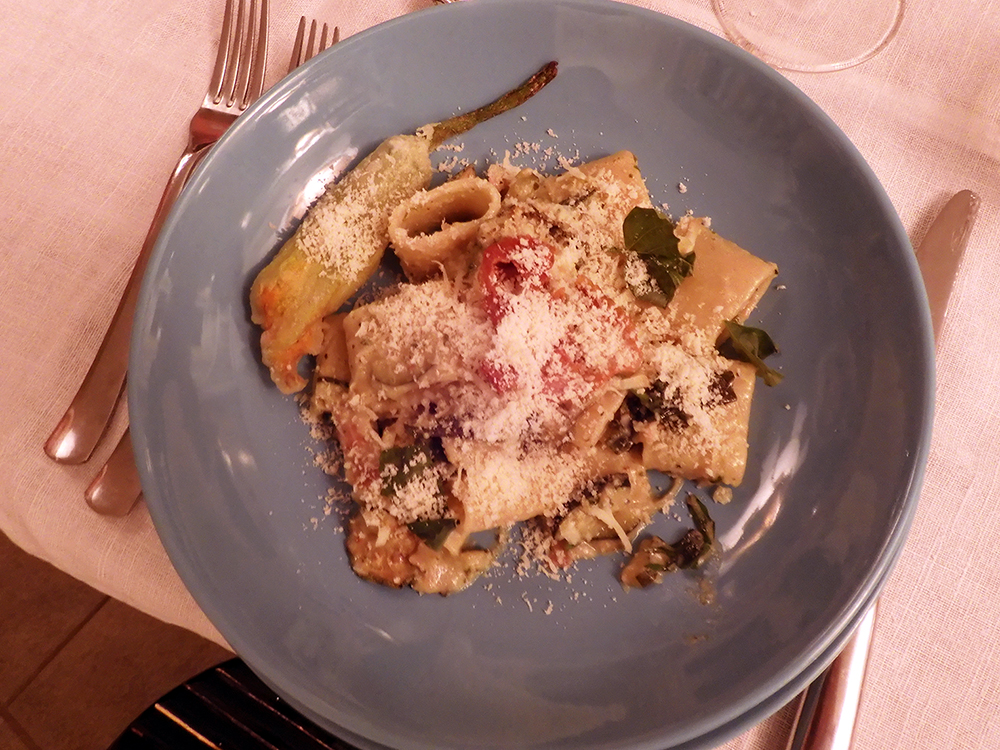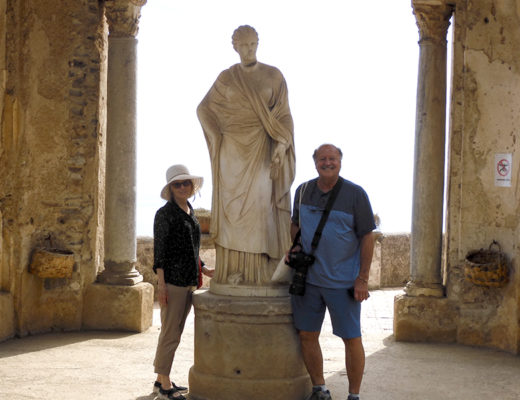A number of years ago we did a private tour of Sicily which has never been forgotten. Giuseppe was both our driver and guide. The thing we always harken back to was while we met Giuseppe in Palermo to begin our adventure, we asked if we could stop in Corleone along the way. The terse response was ‘My father is not respected in Corleone.’ Obviously, we never toured the hillsides where Michael Corleone was supposed to have walked during his banishment. And there is more to this story, but we will come back to that.
On that trip we were introduced to the native Sicilian wines with Nero D’Avola the red everyone pointed us to. It tends to be rich, elegant and full bodied with notes of ripe fruits and spices. It generally has a strong personality that pairs incredibly well with red meat courses and aged cheeses. In our experience, it goes well with most anything you would eat with a Cabernet, but has a totally different bouquet and mouth feel
What led me to this reminiscence is I recently bought a bottle of Luma Nero D’Avola 2018, bottled by Cantina Cellaro s.c.a of Sambuca di Sicilia, Italy. It is imported by Gonzalez Byass USA, Chicago, Illinois. As soon as I pulled the cork, I knew this was going to be a special bottle. The bouquet met me where I stood, with only the cork out. I have never before found a bouquet that presented itself in quite this way. The first sip was a bit more tannic than I like, but within fifteen minutes, the wine had smoothed out and became one of the most drinkable reds I’ve had in a long time.
A varietal I’d never considered from Sicily arrived at my house a few days later: 100% Petite Verdot. I was surprised to find one from Sicily. I had come across one from Australia by MUD, but just after finding this one it was withdrawn from the US market. I moved on to a Spanish version by Marques d’ Murrieta which I found much more tannic than I prefer. Shortly after we made a trip to Chile where I found several interesting Petite Verdot producers, the most notable being Laura Hartwig. But when I read that Mazzei, who owns Zisola in Sicily, was the actual producer I had to try it. The 2015 Zisola Effe Emme is produced at the Zisola winery in Noto and imported by Kirkcrest Imports of Danville, California.
While the Zisola did not have the explosive bouquet of the Luma Nero D’Avola, once in the glass for about a half hour it was as smooth. It also has the Petite Verdot mouth feel and aftertaste that I personally find very appealing. I find it a bit less harsh than most cabernets, but I tend to like Cabernet Franc more than Cabernet Sauvignon, so that may give you a better understanding of what appeals to me.
The third Sicilian bottle this week is a Benanati Etna Rosso 2016, bottled by Benanti Viticoltori SPA, Viagrande, Sicily and imported by Lyra, LLC, South San Francisco, California. This brings me to my second Sicilian memory. Giuseppe took us to Taormina, a hillside city well up off the coast but overlooking it, south of Messina. The notable historical monument is the Rocca, a Moorish castle, that overlooks the city, which also has a Roman theater with fantastic acoustics. Taormina has incredible views of Mt. Etna. We visited the volcano and climbed up into the crater, although it was not active during our stay, a situation that has since changed. We were able to drive amongst the lava flows and saw homes that had been overwhelmed during a prior eruption. So, we have a great appreciation for the wines produced from these metamorphosed rocky soils. Giuseppe booked a hotel for us that is about 250 yards from the abandoned Rocca. Between the hotel and the castle are two restaurants. We walked up to the Rocca, looked around, although closed to the public. We came back down and had a great meal at the restaurant closest to the Rocca. One dish was a Fiocchi, which is a pasta noodle, filled with gorgonzola cheese, walnuts and pears, in a light cream sauce. Very rich but very good. I had this dish at a restaurant in Dallas, although the Taormina version has pistachios rather than walnuts.

When the meal was over, I presented my credit card and was told their card machine was not working. We did not have enough cash to pay for the meal so embarrassed I asked how we could pay him. The owner. Alfeo Puglia, simply said, ‘Come back tomorrow, maybe the card reader will be working.’ After the day at Mt. Etna we did return, had another great meal and again presented our credit card. Again, Alfeo told us the machine was not working. I explained that we were leaving the next day and would not likely be returning. Alfeo said ‘Come with me.’ We walked down to the other restaurant, after a brief conversation we gave our credit card to Alfeo’s competitor, who charged us for the two sets of meals and gave Alfeo the cash.
Five years later we returned to Taormina and informed Alfeo in advance that we were coming back. He joined us for lunch and prepared a special meal for us. We had a great conversation, learned that Alfeo had just purchased the restaurant about two weeks before we visited earlier and that was why his visa merchant account wasn’t set up. When we left, we gave Alfeo twice the value of the bill, informing him that we had never forgotten his trust that we would come back and pay for our meal. As a parting gift he gave us a bottle of Etna Rosso to bring home.
Etna Rosso is made from Nerello Mescalese, an autoctonous red variety and Nerello Cappuccio which has been growing around the volcano for centuries. It is a lighter wine than the Nero D’Avola and Petite Verdot, but the volcanic soils give it a distinctive taste that pairs well with most pasta dishes we sampled during our time in Sicily.
Three reds, three distinct and unexpected experiences. Sicily has arrived at least in our household.




